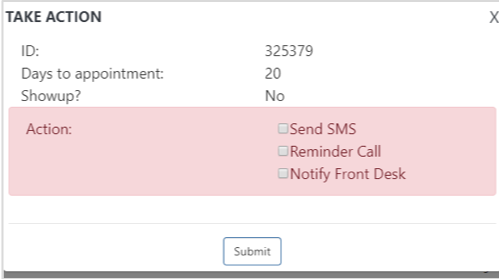Predictive Analytics In Healthcare: Predicting Missed Appointments

Predictive health analytics is playing a vital role in healthcare organizations, providing real-time insights to an industry struggling to find ways of improving patient care. Data has become a vital tool in delivering insights that help drive critical decisions in these efforts. To learn more about predictive analytics, check out our blog post What is predictive analytics.
One common use case of predictive analytics for healthcare is the ability to predict and reduce the number of missed appointments. Missed appointments cost the healthcare industry an average of 150 billion dollars annually. That factors out to around $200 for every hourly visit.
Predictive modeling can help providers identify the patients most likely to skip out on an appointment. By analyzing historical data from patients who made their appointments, patients who missed them, and patients who rescheduled, a predictive analytics application can find common factors in patients who often miss appointments. Predictive health analytics can also recommend actions that a healthcare provider can take in order to reduce the number of missed appointments.
How Predictive Health Analytics Helps Avoid Missed Appointments
Here’s an example of how predictive analytics can help healthcare providers reduce the number of missed appointments. First, the predictive analytics solution analyzes patient data from past appointments. It looks at factors including patient location, age, occupation, family size, and more to find similarities among patients who missed their appointments in the past. It may also analyze other data such as weather conditions, traffic patterns, time of day, wait time length, the availability of self-scheduling tools for patients, and the number of locations where that doctor takes appointments.
Predictive modeling in healthcare can analyze vast amounts of data and find correlations between missed appointments. For example, maybe patients who live more than 15 minutes away and who have scheduled an appointment during rush hour are more likely to skip. Or perhaps patients who self-schedule their appointments are more likely to make it on time compared to patients who call the office to schedule.
Next, the predictive analytics application considers new patients who have upcoming appointments. It compares data from these patients to the historical data, and makes a prediction about who is likely to miss their appointment.
Actions to Take with Predictive Health Analytics
Predictive analytics can also recommend actions the healthcare facility can take to decrease the number of appointment no-shows.
These actions might include:
- Investing in better self-scheduling software
- Setting up automated reminders via email, text, or phone call
- Establishing a timeline for staff to follow up with every scheduled appointment
- Make it possible for patients to fill out time-consuming paperwork and forward relevant documentation ahead of time
- Instructing staff on ways of engaging patients during their visit to avoid the feeling of being abandoned while waiting on their appointments


